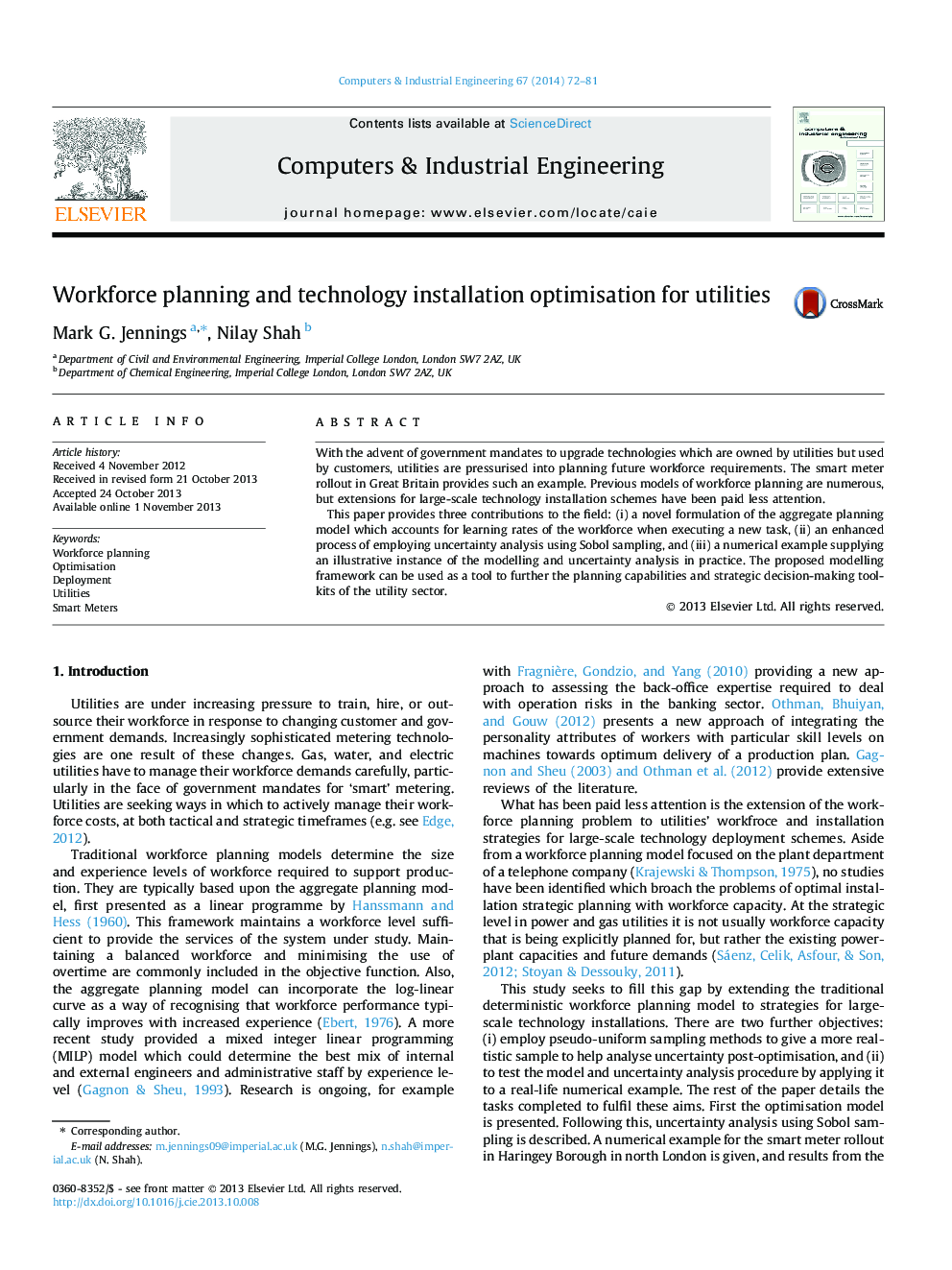| Article ID | Journal | Published Year | Pages | File Type |
|---|---|---|---|---|
| 1134267 | Computers & Industrial Engineering | 2014 | 10 Pages |
•An extension to the workforce planning model is presented.•Endogenous learning rates constrain large-scale technology deployment schemes.•An enhanced uncertainty analysis process is provided using Sobol sampling.•A numerical example for the smart meter rollout in London illustrates the process.•It may be data availability rather than computing power which constrains the models.
With the advent of government mandates to upgrade technologies which are owned by utilities but used by customers, utilities are pressurised into planning future workforce requirements. The smart meter rollout in Great Britain provides such an example. Previous models of workforce planning are numerous, but extensions for large-scale technology installation schemes have been paid less attention.This paper provides three contributions to the field: (i) a novel formulation of the aggregate planning model which accounts for learning rates of the workforce when executing a new task, (ii) an enhanced process of employing uncertainty analysis using Sobol sampling, and (iii) a numerical example supplying an illustrative instance of the modelling and uncertainty analysis in practice. The proposed modelling framework can be used as a tool to further the planning capabilities and strategic decision-making toolkits of the utility sector.
